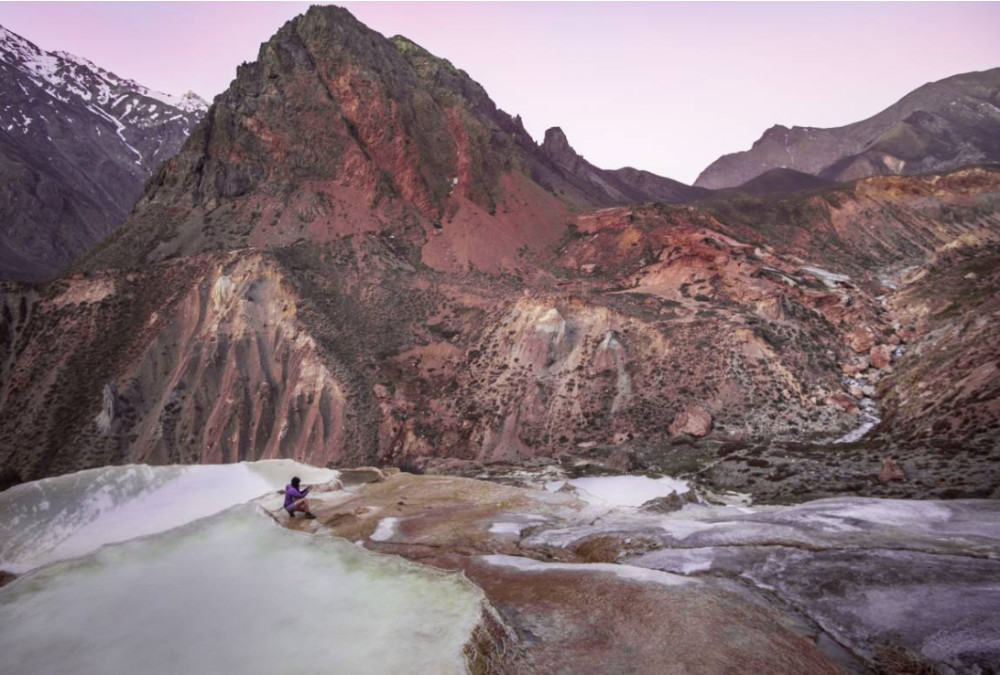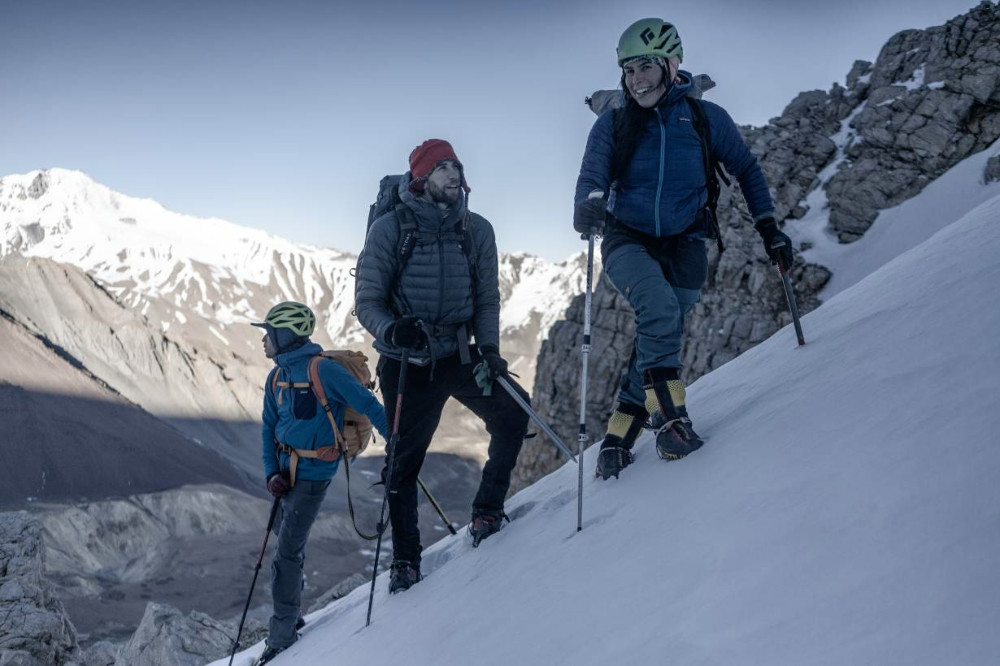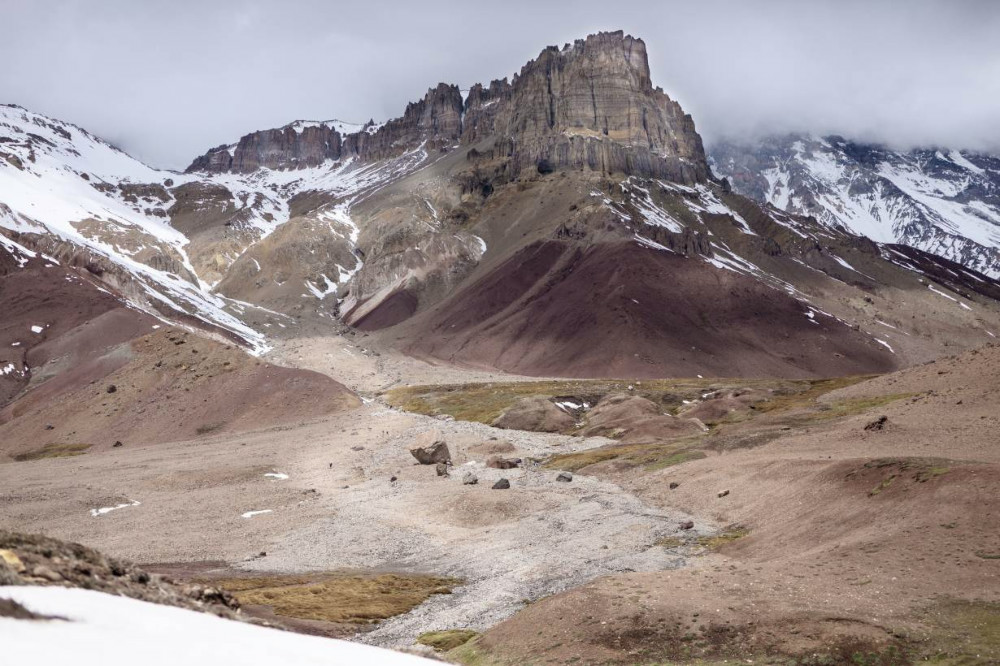
MATT MAYNARD, of Thomson Reuters Foundation, reports on the push to turn a wilderness near Santiago into a new national park – and why some are opposed…
Santiago, Chile
Thomson Reuters Foundation
There were two reasons mountain guide Viviana Callahan and her climbing partner Felipe Cancino made the first ever ascent of Cerro El Barco, a 4,500m mountain flanked by glaciers in the central Chilean Andes.
The first was her mountaineering experience, which has seen her make the first recorded human footprints on multiple snowy peaks in the country’s southern ice fields.
And the second was the citizen-led Queremos Parque (We Want a Park) campaign to turn this pristine wilderness 60 kilometres from Santiago into a massive national park, providing protected green space for residents of the overcrowded capital.
“I didn’t realise the glaciers covered such an extensive area,” she told the Thomson Reuters Foundation after descending to the relative safety of a snowy ridge at 4,000 metres and laying down her ice axe.
“It makes you want to protect them against exploitation.”

Viviana Callahan pauses at sunset at the naturally formed sulphur-deposit pools of Banos Azules in Chile. PICTURE: Handout via Matt Maynard/Earth Rise Productions.
Since its launch in April, 2019, Queremos Parque has gathered more than 192,000 citizen signatures and majority support in both the Lower and Upper Houses of Congress to create a 1,420 square kilometre national park on the border with Argentina.
The aim, say the campaign’s organisers, is to make the area – currently only visited by highly motivated mountaineers – accessible to city dwellers for short hikes, picnics, and bathing in the Banos Azules naturally formed pools.
“This isn’t a park that should be locked away. It’s a park that should be used.”
– Queremos Parque campaign coordinator Pilar Valenzuela.
Nearly a quarter of Chile’s land boasts some kind of protected status, according to data from the National Forestry Corporation (CONAF).
But that figure mainly consists of national parks in remote, sparsely populated regions that are difficult and expensive for the majority of Chile’s population to visit.
“This isn’t a park that should be locked away,” said Queremos Parque campaign coordinator Pilar Valenzuela, referring to some of the inaccessible conservation areas of Patagonia. “It’s a park that should be used.”
The move would also protect the 80 square kilometres of glaciers in the Rio Colorado Basin – vital to the capital’s water supply – from an expanding mining industry, which is lobbying against a proposed glacier protection law.
The last step needed to create the new national park is the approval of President Sebastian Pinera, Valenzuela said. The government has given no timeline for when he might make a decision on the proposal.
“The proximity of this park to millions of potential users, combined with glaciers it would protect, means its creation could be the greatest accomplishment in the history of Chilean conservation,” said James Hardcastle, at the International Union for Conservation of Nature (IUCN).
In Chile’s metropolitan region, home to 40 per cent of the country’s population – about seven million people – protected areas represent less than two per cent of the land.
“A park in this part of the Andes would democratise the mountains,” Valenzuela said.

Viviana Callahan leads the team on the lower snow slope approach to the towering cliffs of Cerro El Barco. PICTURE: Handout via Matt Maynard/Earth Rise Productions
Apart from the positive physical and mental benefits that city residents would gain from regular access to green space, the park would also help improve the health of the planet, noted Kristine Tompkins, UN Environment’s Patron of Protected Areas.
“As a nature-based solution for the climate crisis, the outsized role parks have on our planet can’t be underestimated. Especially during COVID times,” she said.
“For Santiago’s…people, it’s a lifeline.”
Chile is home to 82 per cent of Andean glaciers, nearly all of which are in retreat, and the country is experiencing climate change impacts, such as flooding, heatwaves and devastating forest fires, that scientists say will worsen as the planet heats up.
The park has the potential to provide an escape from heat waves and contribute to global efforts to sequester carbon, noted Hardcastle.
Historically grazing land, the Rio Colorado Basin was expropriated without remuneration by the dictator Augusto Pinochet in 1976 for military purposes.
After democracy was restored in 1990, the Chilean army maintained control of the area.
A D V E R T I S E M E N T
{subscriber-ad}
While the territory technically belongs to the country’s citizens, it is managed by the government’s Ministry of National Assets.
The vast majority of the proposed park lies beyond the bottle-neck entrance at the town of Alfalfal.
There, the route to the valley beyond is surrounded by 200-metre-tall cliffs and guarded by fencing and the private security personnel working for the Alto Maipo hydroelectric project.
Any visitor wanting to access the area currently needs to comply with a complex access protocol put in place by the Chilean Government.
The Chilean cement company Cementos Bio Bio, which bought 10 per cent of the Basin from the government in 1996 for mining, presents additional access issues.
The mine site, which would not be included in the national park, is located centrally in the valley corridor, which means the company would need to agree to let visitors travel through the site to reach the mountains beyond.
Cementos Bio Bio did not reply to queries on whether they were in favour of the park or if they would guarantee access.

The Rio Colorado Basin presents world class recreational as well as environmental protection opportunities. PICTURE: Handout via Matt Maynard/Earth Rise Productions.
Besides the cement mine, various Chilean governments have granted provisional mining rights throughout the Rio Colorado Basin to several multinational companies, including the mining firm Anglo American Plc.
Anglo American said in an emailed statement that it did not have enough information about the campaign to comment on Queremos Parque’s proposal.
Chile’s national assets minister, Julio Isamit, did not respond to queries regarding obstacles to the park’s creation, current access problems or whether he has discussed the details of the national park campaign with the president.
Miguel Fajardo is a livestock herder living on the site of the Cementos Bio Bio mine, at the heart of the proposed national park.
Like other herders in the area, Fajardo pays the cement mine for the right to graze his animals on its land, and fears a national park would pose a threat to his way of living.
One worry is that the park would encourage the resurgence of the area’s mountain lion population, threatening his livestock.
“A park wouldn’t be in our interests.”
– livestock herder Miguel Fajardo.
“A park wouldn’t be in our interests,” he said.
Valenzuela said Queremos Parque is determined to protect the continuing usage rights of herders.
Hardcastle is confident that the right combination of policies and zoning can accommodate the existing mine and the activities of livestock herders, as well as new recreational visitors.
“There is no reason why [the park] would disenfranchise people. Good government, rights and access is the key to conservation.”
For Callahan, the mountaineer, the biggest concern is that the Rio Colorado Basin is protected against resource extraction.
Allowing greater access to the area could help raise awareness among Chileans of the sustainable opportunities the Basin holds, she said.
“We need to connect people to this place in order to protect it.”





